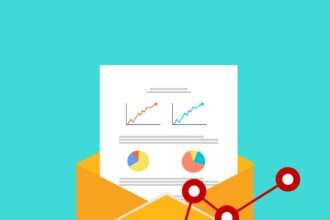Artificial intelligence and data analytics are two of the fasting-growing forms of technology for saving money in the world of business . Most companies achieve this goal by cutting down on labor hours, since labor is one of their biggest expenses. There are certainly downsides to that approach, with job security being high on the list. However, in the world of nonprofits, where so many volunteers work, every job that can be done by a computer means one more set of hands that can be working on something else. Big data and predictive analytics can be very useful for these nonprofits as well.
With that in mind, proper data management in the nonprofit space, as well as the use of artificial intelligence to streamline communication and organizational practices, can be invaluable. Human hours can be used to discuss innovation, while machines sort and organize behind the curtain.
With the use of artificial intelligence’s newest partner, machine learning, nonprofits can also utilize data to help them with innovation. They are using predictive analytics to determine new strategies for fundraising and improved reach. Here are a few ways that trend is already affecting the nonprofit space.
Donor Knowledge
Predictive analytics can help give teams access to tremendous troves of information on donors pertaining to time they have been supporting the organization and amounts of money that they have donated. They can also see founder and volunteer life and family information that has been shared in the past, as well as major connections who may also be interested in donating. By utilizing this information, it is much easier to personalize messages to donors to make them feel as important as they are!
When incorporated with surveys and other things in which donors provide feedback, predictive analytics technology can immediately collect all of the information from said surveys to get a better understanding of the donor base, as a whole, allowing for changes in marketing strategy if that is determined to be a good move.
Smart Spending
Nonprofits always have to spend money to raise funds. Unfortunately, they find that deciding where to spend has always been a gamble. Classic analytics allow for teams to see what has and has not worked in the past for similar organizations, but with properly utilized predictive analytics, teams can now determine what affects outside factors, such as COVID-19, may have on their current operations that wouldn’t have formerly been part of the data pool.
Coupled with the donor knowledge mentioned above, spending trends can also be determined by what major donors want to see from the organizations. These analytics platforms can show whether they like promotional videos and encourage the nonprofits to spend money there. They can show if they like celebrity endorsers, so they can get more leverage out of them. The list of possibilities goes on.
Be Trendy
As is such with human learning, the longer machine learning algorithms are running, the more accurate and innovative the predictive analysis your data team has access to will be. The more knowledge the merrier, too, so teaming up with similar organizations and sharing relevant data just means more good can be done by society, as a whole. As this data pool grows and grows, so does the ability for predictive analytics to really help guide marketing and fundraising strategies, just as it does in the business sector.
But not Too Trendy
At the end of the day, most donors to major nonprofits have been donors for quite some time and wish to continue doing so without too much wining and dining. With that in mind, the ever-growing technological field that is data analytics doesn’t have to be shared in an equally modern format. All of the information gathered by these processes mentioned above can be utilized successfully without too much change in how messages are delivered to donors, and the general public.
Nonprofits Discover Countless Benefits of Data Analytics
Nonprofit organizations need to look at all of the ways that they can use predictive analytics to get more value out of their finite resources. The benefits of this technology cannot possibly be overstated. They just need to use them effectively.










